Nasal high flow therapy for primary respiratory support in preterm infants
- PMID: 37144837
- PMCID: PMC10161968
- DOI: 10.1002/14651858.CD006405.pub4
Nasal high flow therapy for primary respiratory support in preterm infants
Abstract
Background: Nasal high flow (nHF) therapy provides heated, humidified air and oxygen via two small nasal prongs, at gas flows of more than 1 litre/minute (L/min), typically 2 L/min to 8 L/min. nHF is commonly used for non-invasive respiratory support in preterm neonates. It may be used in this population for primary respiratory support (avoiding, or prior to the use of mechanical ventilation via an endotracheal tube) for prophylaxis or treatment of respiratory distress syndrome (RDS). This is an update of a review first published in 2011 and updated in 2016.
Objectives: To evaluate the benefits and harms of nHF for primary respiratory support in preterm infants compared to other forms of non-invasive respiratory support.
Search methods: We used standard, extensive Cochrane search methods. The latest search date March 2022.
Selection criteria: We included randomised or quasi-randomised trials comparing nHF with other forms of non-invasive respiratory support for preterm infants born less than 37 weeks' gestation with respiratory distress soon after birth.
Data collection and analysis: We used standard Cochrane Neonatal methods. Our primary outcomes were 1. death (before hospital discharge) or bronchopulmonary dysplasia (BPD), 2. death (before hospital discharge), 3. BPD, 4. treatment failure within 72 hours of trial entry and 5. mechanical ventilation via an endotracheal tube within 72 hours of trial entry. Our secondary outcomes were 6. respiratory support, 7. complications and 8. neurosensory outcomes. We used GRADE to assess the certainty of evidence.
Main results: We included 13 studies (2540 infants) in this updated review. There are nine studies awaiting classification and 13 ongoing studies. The included studies differed in the comparator treatment (continuous positive airway pressure (CPAP) or nasal intermittent positive pressure ventilation (NIPPV)), the devices for delivering nHF and the gas flows used. Some studies allowed the use of 'rescue' CPAP in the event of nHF treatment failure, prior to any mechanical ventilation, and some allowed surfactant administration via the INSURE (INtubation, SURfactant, Extubation) technique without this being deemed treatment failure. The studies included very few extremely preterm infants less than 28 weeks' gestation. Several studies had unclear or high risk of bias in one or more domains. Nasal high flow compared with continuous positive airway pressure for primary respiratory support in preterm infants Eleven studies compared nHF with CPAP for primary respiratory support in preterm infants. When compared with CPAP, nHF may result in little to no difference in the combined outcome of death or BPD (risk ratio (RR) 1.09, 95% confidence interval (CI) 0.74 to 1.60; risk difference (RD) 0, 95% CI -0.02 to 0.02; 7 studies, 1830 infants; low-certainty evidence). Compared with CPAP, nHF may result in little to no difference in the risk of death (RR 0.78, 95% CI 0.44 to 1.39; 9 studies, 2009 infants; low-certainty evidence), or BPD (RR 1.14, 95% CI 0.74 to 1.76; 8 studies, 1917 infants; low-certainty evidence). nHF likely results in an increase in treatment failure within 72 hours of trial entry (RR 1.70, 95% CI 1.41 to 2.06; RD 0.09, 95% CI 0.06 to 0.12; number needed to treat for an additional harmful outcome (NNTH) 11, 95% CI 8 to 17; 9 studies, 2042 infants; moderate-certainty evidence). However, nHF likely does not increase the rate of mechanical ventilation (RR 1.04, 95% CI 0.82 to 1.31; 9 studies, 2042 infants; moderate-certainty evidence). nHF likely results in a reduction in pneumothorax (RR 0.66, 95% CI 0.40 to 1.08; 10 studies, 2094 infants; moderate-certainty evidence) and nasal trauma (RR 0.49, 95% CI 0.36 to 0.68; RD -0.06, 95% CI -0.09 to -0.04; 7 studies, 1595 infants; moderate-certainty evidence). Nasal high flow compared with nasal intermittent positive pressure ventilation for primary respiratory support in preterm infants Four studies compared nHF with NIPPV for primary respiratory support in preterm infants. When compared with NIPPV, nHF may result in little to no difference in the combined outcome of death or BPD, but the evidence is very uncertain (RR 0.64, 95% CI 0.30 to 1.37; RD -0.05, 95% CI -0.14 to 0.04; 2 studies, 182 infants; very low-certainty evidence). nHF may result in little to no difference in the risk of death (RR 0.78, 95% CI 0.36 to 1.69; RD -0.02, 95% CI -0.10 to 0.05; 3 studies, 254 infants; low-certainty evidence). nHF likely results in little to no difference in the incidence of treatment failure within 72 hours of trial entry compared with NIPPV (RR 1.27, 95% CI 0.90 to 1.79; 4 studies, 343 infants; moderate-certainty evidence), or mechanical ventilation within 72 hours of trial entry (RR 0.91, 95% CI 0.62 to 1.33; 4 studies, 343 infants; moderate-certainty evidence). nHF likely results in a reduction in nasal trauma, compared with NIPPV (RR 0.21, 95% CI 0.09 to 0.47; RD -0.17, 95% CI -0.24 to -0.10; 3 studies, 272 infants; moderate-certainty evidence). nHF likely results in little to no difference in the rate of pneumothorax (RR 0.78, 95% CI 0.40 to 1.53; 4 studies, 344 infants; moderate-certainty evidence). Nasal high flow compared with ambient oxygen We found no studies examining this comparison. Nasal high flow compared with low flow nasal cannulae We found no studies examining this comparison.
Authors' conclusions: The use of nHF for primary respiratory support in preterm infants of 28 weeks' gestation or greater may result in little to no difference in death or BPD, compared with CPAP or NIPPV. nHF likely results in an increase in treatment failure within 72 hours of trial entry compared with CPAP; however, it likely does not increase the rate of mechanical ventilation. Compared with CPAP, nHF use likely results in less nasal trauma and likely a reduction in pneumothorax. As few extremely preterm infants less than 28 weeks' gestation were enrolled in the included trials, evidence is lacking for the use of nHF for primary respiratory support in this population.
Copyright © 2023 The Cochrane Collaboration. Published by John Wiley & Sons, Ltd.
Conflict of interest statement
KH works as a Neonatologist, Royal Women's Hospital, Royal Children's Hospital (PIPER retrieval). She is PhD candidate, currently undertaking a PhD in neonatal high flow. Her PhD main area of study is an RCT of high flow during neonatal endotracheal intubation; equipment for this is supplied by Vapotherm. Vapotherm had no input into the trial design, nor access to trial data or the manuscript prior to publication. This trial is not eligible for inclusion in this review. KH has been a co‐author on review articles and book chapters which include descriptions of nasal high flow.
BJM has published several original research articles, review articles and editorials on the topic of nasal high flow in peer‐reviewed journals. He works as a Consultant Neonatologist at the Royal Women's Hospital, Parkville, Victoria, Australia. BJM is one of KH's PhD supervisors, and is a co‐investigator on the RCT of high flow during neonatal endotracheal intubation. This trial is not eligible for inclusion in this review. BM was an author of two of the trials included in this review (Manley 2019; Roberts 2016). These studies were funded by NHMRC (Australia). Analysis of those papers was performed by other review authors (DW, AGDP and KH).
AGDP works as a Consultant Neonatologist, Royal Hobart Hospital, Tasmania, Australia.
DW works as a Consultant Neonatologist, John Radcliffe Hospital, Oxford, UK.
Figures




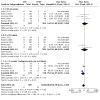
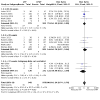

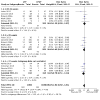



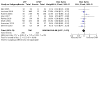
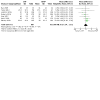
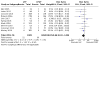
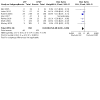

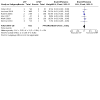

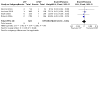


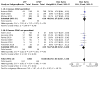

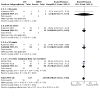
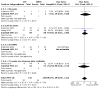

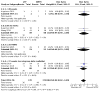






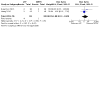

Update of
-
High flow nasal cannula for respiratory support in preterm infants.Cochrane Database Syst Rev. 2016 Feb 22;2(2):CD006405. doi: 10.1002/14651858.CD006405.pub3. Cochrane Database Syst Rev. 2016. Update in: Cochrane Database Syst Rev. 2023 May 5;5:CD006405. doi: 10.1002/14651858.CD006405.pub4. PMID: 26899543 Free PMC article. Updated.
References
References to studies included in this review
Armanian 2019 {published data only}
-
- Armanian AM, Iranpour R, Parvaneh M, Salehimehr N, Feizi A, Hajirezaei M. Heated humidified high flow nasal cannula (HHHFNC) is not an effective method for initial treatment of respiratory distress syndrome (RDS) versus nasal intermittent mandatory ventilation (NIMV) and nasal continuous positive airway pressure (NCPAP). Journal of Research in Medical Sciences 2019;24(1):73. [DOI: 10.4103/jrms.JRMS_2_19] [PMID: ] - DOI - PMC - PubMed
Demirel 2019 {published data only}
Farhat 2018 {published data only}
-
- Farhat AS, Mohammadzadeh A, Mamuri GA, Saeidi R, Noorizadeh S. Comparison of nasal non-invasive ventilation methods in preterm neonates with respiratory distress syndrome. Iranian Journal of Neonatology 2018;9(4):53-60. [DOI: 10.22038/ijn.2018.24544.1313] [ijn.mums.ac.ir/article_11903_5b70c1d5f00e5d32978a2e6c2061f8dc.pdf] - DOI
Kugelman 2015 {published and unpublished data}
Lavizzari 2016 {published and unpublished data}
-
- Ciuffini F, Pietrasanta C, Lavizzari A, Musumeci S, Gualdi C, Sortino S, et al. Comparison between two different modes of non-invasive ventilatory support in preterm newborn infants with respiratory distress syndrome mild to moderate: preliminary data. La Pediatria Medica e Chirurgica 2014;36(4):88. [DOI: 10.4081/pmc.2014.88] [PMID: ] - DOI - PubMed
-
- Lavizzari A, Colnaghi M, Ciuffini F, Veneroni C, Musumeci S, Cortinovis I, et al. Heated, humidified high-flow nasal cannula vs nasal continuous positive airway pressure for respiratory distress syndrome of prematurity: a randomized clinical noninferiority trial. JAMA Pediatrics [Epub ahead of print] 2016. [DOI: 10.1001/jamapediatrics.2016.1243] [PMID: ] - DOI - PubMed
Manley 2019 {published and unpublished data}
Murki 2018 {published and unpublished data}
Nair 2005 {unpublished data only}
-
- Nair G, Karna P. Comparison of the effects of Vapotherm and nasal CPAP in respiratory distress. Pediatric Academic Societies Meeting; 2005 May 14-17; Washington, DC (accessed May 2015):E-PAS2005:57:2054.
Roberts 2016 {published and unpublished data}
Sharma 2019 {published data only}
-
- Sharma P, Poonia A, Bansal R. Comparison of efficacy of nasal continuous positive airway pressure and heated humidified high-flow nasal cannula as a primary mode of respiratory support in preterm infants. Journal of Clinical Neonatology 2019;8(2):102-5. [DOI: 10.1007/s13312-016-0806-3] [PMID: ] - DOI - PubMed
Shin 2017 {published data only}
-
- Shin J, Park K, Lee EH, Choi BM. Humidified high flow nasal cannula versus nasal continuous positive airway pressure as an initial respiratory support in preterm infants with respiratory distress: a randomized, controlled non-inferiority trial. Journal of Korean Medical Science 2017;32(4):650-5. [DOI: 10.3346/jkms.2017.32.4.650] [PMID: ] - DOI - PMC - PubMed
Wang 2018 {published data only}
-
- Wang Z, Xiang JW, Gao WW, Shen YZ, Zhou WJ, Chen J, et al. [Comparison of clinical efficacy of two noninvasive respiratory support therapies for respiratory distress syndrome in very low birth weight preterm infants]. Zhongguo Dang Dai Er Ke Za Zhi 2018;20(8):603-7. [DOI: 10.7499/j.issn.1008-8830.2018.08.001] [PMID: ] - DOI - PMC - PubMed
References to studies excluded from this review
Akbarian‐Rad 2020 {published data only}
-
- Akbarian-Rad Z, Mohammadi A, Khafri S, Ahmadpour-Kacho M, Zahed-Pasha Y, Haghshenas-Mojaveri M. Comparison of heated humidified high flow nasal cannula and nasal continuous positive airway pressure after surfactant administration in preterm neonates with respiratory distress syndrome. Clinical Respiratory Journal 2020 [Epub ahead of print]. [DOI: 10.1111/crj.13191] [PMID: ] - DOI - PubMed
Boumecid 2007 {published data only}
-
- Boumecid H, Rakza T, Abazine A, Klosowski S, Matran R, Storme L. Influence of three nasal continuous positive airway pressure devices on breathing pattern in preterm infants. Archives of Disease in Childhood. Fetal and Neonatal Edition 2007;92(4):F298-300. [DOI: 10.1136/adc.2006.103762] [PMID: ] - DOI - PMC - PubMed
Campbell 2006 {published data only}
Capasso 2005 {published data only}
-
- Capasso L, Capasso A, Raimondi F, Vendemmia M, Araimo G, Paludetto R. A randomized trial comparing oxygen delivery on intermittent positive pressure with nasal cannulae versus facial mask in neonatal primary resuscitation. Acta Paediatrica 2005;94(2):197-200. [DOI: 10.1111/j.1651-2227.2005.tb01890.x] [PMID: ] - DOI - PubMed
Charki 2020 {published data only}
-
- Charki S, Patil P, Hadalgi L, Kulkarni T, Loni R, Karva MM, et al. Heated humidified high-flow nasal cannula versus nasal continuous positive airways pressure for respiratory support in preterm neonates – a noninferiority trial at a tertiary care center. Journal of Clinical Neonatology 2020;9(3):168-74. [DOI: 10.4103/jcn.JCN_76_19] - DOI
Chen 2015 {published data only}
-
- Chen J, Gao WW, Xu F, Du LL, Zhang T, Ling X, et al. [Comparison of clinical efficacy of heated humidified high flow nasal cannula versus nasal continuous positive airway pressure in treatment of respiratory distress syndrome in very low birth weight infants]. Zhongguo Dang Dai Er Ke Za Zhi 2015;17(8):847-51. [PMID: ] - PubMed
Chen 2020 {published data only}
Collins 2013b {published data only}
-
- Collins CL, Holberton JR, Barfield C, Davis PG. A randomized controlled trial to compare heated humidified high-flow nasal cannulae with nasal continuous positive airway pressure postextubation in premature infants. Journal of Pediatrics 2013;162(5):949-54.e1. [DOI: 10.1016/j.jpeds.2012.11.016] [PMID: ] - DOI - PubMed
Courtney 2001 {published data only}
-
- Courtney SE, Pyon KH, Saslow JG, Arnold GK, Pandit PB, Habib RH. Lung recruitment and breathing pattern during variable versus continuous flow nasal continuous positive airway pressure in premature infants: an evaluation of three devices. Pediatrics 2001;107(2):304-8. [DOI: 10.1542/peds.107.2.304] [PMID: ] - DOI - PubMed
de Jongh 2014 {published data only}
-
- Jongh BE, Locke R, Mackley A, Emberger J, Bostick D, Stefano J, et al. Work of breathing indices in infants with respiratory insufficiency receiving high-flow nasal cannula and nasal continuous positive airway pressure. Journal of Perinatology 2014;34(1):27-32. [DOI: 10.1038/jp.2013.120] [PMID: ] - DOI - PMC - PubMed
Elkhwad 2014 {published data only}
-
- Elkhwad M, Kantak A, Dako J, Grow J. Randomized control trial: Vapotherm (high flow humidified nasal cannula) as a new tool in comparison with conventional nasal continuous positive airway pressure (NCPAP) in the management of respiratory distress syndrome (RDS) in extreme low birth infants in immediate post extubation period. Pediatric Academic Societies Annual Meeting; 2014 Jul 17-18; Vienna, Austria 2014. [CENTRAL: CN-01135006]
Hua 2013 {published data only}
-
- Hua C, McEwan A, Callander I. Hiflow compared to CPAP from 30 weeks gestation at Liverpool hospital. Journal of Paediatrics and Child Health 2013;49:131.
Iranpour 2011 {published and unpublished data}
-
- Iranpour R, Sadeghnia A, Hesaraki M. High-flow nasal cannula versus nasal continuous positive airway pressure in the management of respiratory distress syndrome. Journal of Isfahan Medical School 2011;29(143):761-71.
Kadivar 2016 {published data only}
-
- Kadivar M, Mosayebi Z, Razi N, Nariman S, Sangsari R. High flow nasal cannulae versus nasal continuous positive airway pressure in neonates with respiratory distress syndrome managed with INSURE method: a randomized clinical trial. Iranian Journal of Medical Sciences 2016;41(6):494-500. [PMID: ] - PMC - PubMed
Kang 2016 {published data only}
-
- Kang WQ, Xu BL, Liu DP, Zhang YD, Guo J, Li ZH, et al. Efficacy of heated humidified high-flow nasal cannula in preterm infants aged less than 32 weeks after ventilator weaning. Zhongguo Dang Dai Er Ke Za Zhi 2016;18(6):488-91. [DOI: 10.7499/j.issn.1008-8830.2016.06.004] [PMID: ] - DOI - PMC - PubMed
Klingenberg 2014 {published data only}
-
- Klingenberg C, Pettersen M, Hansen EA, Gustavsen LJ, Dahl IA, Leknessund A, et al. Patient comfort during treatment with heated humidified high flow nasal cannulae versus nasal continuous positive airway pressure: a randomised cross-over trial. Archives of Disease in Childhood. Fetal and Neonatal Edition 2014;99(2):F134-7. [DOI: 10.1136/archdischild-2013-304525] [PMID: ] - DOI - PubMed
Lampland 2009 {published data only}
Lee 2011 {published data only}
-
- Lee EH, Choi BM, Park KH, Park C, Park HJ, Hwang MJ, et al. Comparing humidified high Flow nasal cannula (HHFNC) versus nasal continuous positive airway pressure (NCPAP) as respiratory supports after extubation in preterm infants. Pediatric Research 2011;70:523. [DOI: 10.1038/pr.2011.748] - DOI
Liu 2014 {published data only}
-
- Liu C, Collaborative Group for the Multicenter Study on Heated Humidified High-flow Nasal Cannula Ventilation. Efficacy and safety of heated humidified high-flow nasal cannula for prevention of extubation failure in neonates. Zhonghua Er Ke Za Zhi 2014;52(4):271-6. [PMID: ] - PubMed
Ma 2014 {published data only}
Manley 2013 {published data only}
Miller 2010 {published data only}
Mostafa‐Gharehbaghi 2015 {published data only}
-
- Mostafa-Gharehbaghi M, Mojabi H. Comparing the effectiveness of nasal continuous positive airway pressure (NCPAP) and high flow nasal cannula (HFNC) in prevention of post extubation assisted ventilation. Zahedan Journal of Research in Medical Sciences 2015;17(6):e984. [DOI: 10.17795/zjrms984] - DOI
Nasef 2015 {published data only}
-
- Nasef N, El-Gouhary E, Schurr P, Reilly M, Beck J, Dunn M, et al. High-flow nasal cannulae are associated with increased diaphragm activation compared with nasal continuous positive airway pressure in preterm infants. Acta Paediatrica 2015;104(8):e337-43. [DOI: 10.1111/apa.12998] [PMID: ] - DOI - PubMed
Pyon 2008 {published data only}
-
- Pyon KH, Aghai ZH, Nakhla TA, Stahl GE, Saslow JG. High flow nasal cannula in preterm infants: effects of high flow rates on work of breathing. In: Proceedings of the Pediatric Academic Societies Annual Meeting; 2008 May 3-6; Honolulu (HI). 2008:E-PAS2008:633763.13.
Saslow 2006 {published data only}
Shokouhi 2019 {published data only}
-
- Shokouhi M, Basiri B, Sabzehei MK, Mahdiankhoo M, Pirdehghan A. Efficacy and complications of humidified high-flow nasal cannula versus nasal continuous positive airway pressure in neonates with respiratory distress syndrome after surfactant therapy. Iranian Red Crescent Medical Journal 2019;21(2):e83615. [PMID: 10.5812/ircmj.83615] - DOI
Soonsawad 2016 {published data only}
Soonsawad 2017 {published data only}
Sreenan 2001 {published data only}
Wilson 1996 {published data only}
-
- Wilson J, Arnold C, Connor R, Cusson R. Evaluation of oxygen delivery with the use of nasopharyngeal catheters and nasal cannulas. Neonatal Network 1996;15(4):15-22. [PMID: ] - PubMed
Woodhead 2006 {published data only}
-
- Woodhead DD, Lambert DK, Clark JM, Christensen RD. Comparing two methods of delivering high-flow gas therapy by nasal cannula following endotracheal extubation: a prospective, randomized, masked, crossover trial. Journal of Perinatology 2006;26(8):481-5. [DOI: 10.1038/sj.jp.7211543] [PMID: ] - DOI - PubMed
Zivanovic 2019 {published data only}
-
- Zivanovic S, Scrivens A, Panza R, Reynolds P, Laforgia N, Ives KN, et al. Nasal high-flow therapy as primary respiratory support for preterm infants without the need for rescue with nasal continuous positive airway pressure. Neonatology 2019;115(2):175-81. [DOI: 10.1159/000492930] [PMID: ] - DOI - PubMed
References to studies awaiting assessment
Awad 2021 {published data only}
-
- Awad HA, El-Farrash RA, Shinkar DM, Aly YA, Soliman N, Alhassanin AH. A study of heated, humidified high flow nasal cannula as an initial respiratory support in preterm neonates. QJM : An International Journal of Medicine 2021;114:Suppl 1.
Balasubramanian 2022 {published data only}
-
- Balasubramanian H, Sakharkar S, Majarikar S, Srinivasan L, Kabra NS, Garg B, et al. Efficacy and safety of two different flow rates of nasal high-flow therapy in preterm neonates ≥28 weeks of gestation: a randomized controlled trial. American Journal of Perinatology 2022;39(15):1693-701. - PubMed
Cetinkaya 2018 {published data only (unpublished sought but not used)}
-
- Cetinkaya M, Cebeci B, Semerci S Y, Kurnaz D, Saglam O. Comparison of three different non-invasive ventilation modes in preterm infants with respiratory distress syndrome: prospective randomized study. 26th European Workshop on Neonatology; 2018 Sep 2–5; Cappadocia, Turkey. [content.iospress.com/download/journal-of-neonatal-perinatal-medicine/npm...
Febre 2015 {published data only}
-
- Febre A, Merritt TA, Terry M, Tong C, Goldstein M. Adaptive dynamic inspiratory nasal apparatus: comparison to traditional nasal continuous airway pressure (NCPAP). Newborn and Infant Nursing Reviews 2015;15(1):17-20. [DOI: 10.1053/j.nainr.2015.01.008] - DOI
Iskandar 2019 {published data only}
-
- Iskandar A, Kaban R, Djer M. Heated, humidified high-flow nasal cannula vs. nasal CPAP in infants with moderate respiratory distress. Paediatrica Indonesiana 2019;59(6):331.
Lawrence 2012 {published data only}
-
- Lawrence JR, Martin GC. A pilot study to evaluate the safety and efficacy of high flow nasal cannula vs. conventional NCPAP. Pediatric Academic Society; 2012 Apr 28-May 1; Boston (MA).
Oktem 2021 {published data only}
-
- Oktem A, Yigit S, Celik HT, Yurdakok M. Comparison of four different non-invasive respiratory support techniques as primary respiratory support in preterm infants. Turkish Journal of Pediatrics 2021;63(1):23-30. - PubMed
Park 2011 {published data only}
-
- Park KH, Lee EH, Chung BH, Choi YO, Lee JH, Choi BM, et al. Comparing usefulness of humidified high-flow nasal cannula and nasal continuous positive airway pressure for neonatal respiratory diseases in preterm infants. Pediatric Academic Societies Annual Meeting; 2011 Apr 30–May 3; Denver, CO. [CENTRAL: CN-00831960]
Shirvani 2019 {published data only}
-
- Shirvani TE, Nayeri FS, Shariat M, Nafas NN, Mirjalili SR, Hosseini SN, et al. Continuous positive airway pressure or high flow nasal cannula for respiratory distress syndrome: a randomized control trial among premature infants. Research Square 2019 [Preprint]. [DOI: 10.21203/rs.2.11296/v1] - DOI
References to ongoing studies
ACTRN12610000677000 {published data only}
-
- ACTRN12610000677000. High flow support versus continuous positive airway pressure (CPAP) support in non-acute respiratory support for preterm infants from 30 weeks corrected gestation. who.int/trialsearch/Trial2.aspx?TrialID=ACTRN12610000677000 (first received 18 August 2010).
ACTRN12611000233921 {published data only}
-
- ACTRN12611000233921. The use of headbox oxygen versus high flow nasal cannula (HFNC) for neonatal respiratory distress in non-tertiary hospitals [High-flow nasal cannulae versus ambient oxygen for the treatment of newborn infants with early respiratory distress in non-tertiary special care nurseries – a multicentre randomised controlled trial]. anzctr.org.au/Trial/Registration/TrialReview.aspx?id=336574 (first received 21 February 2011).
CTRI/2017/09/009910 {published data only}
-
- CTRI/2017/09/009910. High flow nasal cannulae versus nasal continuous positive airway pressure in neonates with respiratory distress syndrome [To study the equivalence of high flow nasal cannula oxygen therapy and nasal continuous positive airway pressure as respiratory support in preterm neonates – a prospective observational study]. ctri.nic.in/Clinicaltrials/pdf_generate.php?trialid=13233&EncHid=&am... (first received 25 September 2017).
CTRI/2019/10/021633 {published data only}
-
- CTRI/2019/10/021633. Breathing stabilization in small babies at the time of birth [Delivery room respiratory stabilization of preterm neonates: a randomized controlled trial]. ctri.nic.in/Clinicaltrials/pdf_generate.php?trialid=37352&EncHid=&am... (first received 14 October 2019).
Irct2016052510026N {published data only}
-
- Irct2016052510026N. Therapeutic effect of heated, humidified, high-flow nasal cannula (HHHFNC) in respiratory distress syndrome. trialsearch.who.int/Trial2.aspx?TrialID=IRCT2016052510026N7 (first received 31 March 2019). [CENTRAL: CN-01895122]
Irct20180226038865N {published data only}
-
- Irct20180226038865N. Comparison of two forms of non-invasive respiratory supporting preterm infants. trialsearch.who.int/Trial2.aspx?TrialID=IRCT20180226038865N1 (first received 31 March 2019). [CENTRAL: CN-01895352]
Irct20190623043988N {published data only}
-
- Continuous positive airway pressure or high flow nasal cannula for respiratory distress syndrome. trialsearch.who.int/Trial2.aspx?TrialID=IRCT20190623043988N1 (first received 5 July 2019).
Irct20200616047788N {published data only}
-
- Irct20200616047788N. Comparing two respiratory support methods in RDS treatment of premature neonates. trialsearch.who.int/Trial2.aspx?TrialID=IRCT20200616047788N1 (first received 21 July 2020).
ISRCTN66716753 {published data only}
-
- ISRCTN66716753. High flow nasal prongs (HFNP) therapy versus nasal continuous positive airway pressure (NCPAP) in establishing full oral feeds in very low birth weight (VLBW) infants – randomized controlled trial [Can high flow nasal prongs therapy facilitate earlier establishment of full oral feeds in babies who are nasal continuous positive airway pressure dependent at 32 weeks gestation?]. isrctn.com/ISRCTN66716753 (first received 1 February 2013).
NCT01270581 {unpublished data only}
-
- NCT01270581. High flow nasal cannula versus bubble nasal CPAP for the treatment of transient tachypnea of the newborn in infants ≥ 35 weeks gestation. clinicaltrials.gov/ct2/show/NCT01270581 (first received 5 January 2011).
NCT02055339 {published data only}
-
- NCT02055339. Comparison of nasal continuous positive airway pressure with low flow oxygen versus heated, humidified high flow nasal cannula for oral feeding of the premature infant (chomp trial): a pilot study [Pilot study comparing different modes of non-invasive ventilation for the oral feeding of preterm infants (CHOMP)]. clinicaltrials.gov/ct2/show/NCT02055339 (first received 5 February 2014).
NCT02499744 {published data only}
-
- NCT02499744. Humidified high flow nasal cannula versus nasal intermittent positive ventilation in neonates. clinicaltrials.gov/ct2/show/NCT02499744 (first received 16 July 2015).
UMIN000018983 {published data only}
-
- UMIN000018983. Effective and safe use of heated humidified high flow nasal cannula in neonates. umin.ac.jp/cgi-open-bin/ctr_e/ctr_view.cgi?recptno=R000021932 (first received 29 September 2015).
Additional references
Abdel‐Latif 2021
-
- Abdel-Latif ME, Davis PG, Wheeler K I, De Paoli AG, Dargaville PA. Surfactant therapy via thin catheter in preterm infants with or at risk of respiratory distress syndrome. Cochrane Database of Systematic Reviews 2021, Issue 5. Art. No: CD011672. [DOI: 10.1002/14651858.CD011672.pub2] - DOI - PMC - PubMed
Bahadue 2012
Bell 1978
Bressan 2013
Bruet 2021
Ciuffini 2014
-
- Ciuffini F, Pietrasanta C, Lavizzari A, Musumeci S, Gualdi C, Sortino S, et al. Comparison between two different modes of non-invasive ventilatory support in preterm newborn infants with respiratory distress syndrome mild to moderate: preliminary data. La Pediatria Medica e Chirurgica 2014;36(4):88. [DOI: 10.4081/pmc.2014.88] - DOI - PubMed
Collins 2013a
Conte 2018
-
- Conte F, Orfeo L, Gizzi C, Massenzi L, Fasola S. Rapid systematic review shows that using a high-flow nasal cannula is inferior to nasal continuous positive airway pressure as first-line support in preterm neonates. Acta Paediatrica 2018;107(10):1684-96. [DOI: 10.1111/apa.14396] [PMID: ] - DOI - PubMed
Davidson 2017
Dunn 2011
Dysart 2009
Fleeman 2016
-
- Fleeman N, Mahon J, Bates V, Dickson R, Dundar Y, Dwan K, et al. The clinical effectiveness and cost-effectiveness of heated humidified high-flow nasal cannula compared with usual care for preterm infants: systematic review and economic evaluation. Health Technology Assessment 2016;20(30):1-70. [DOI: 10.3310/hta20300] [PMID: ] - DOI - PMC - PubMed
Frizzola 2011
GRADEpro GDT [Computer program]
-
- GRADEpro GDT. Version accessed 19 October 2020. Hamilton (ON): McMaster University (developed by Evidence Prime). Available at gradepro.org.
Hegde 2013
Herting 2013
Higgins 2020
-
- Higgins JP, Thomas J, Chandler J, Cumpston M, Li T, Page MJ, Welch VA, editor(s). Cochrane Handbook for Systematic Reviews of Interventions Version 6.1 (updated September 2020). Cochrane, 2020. Available from training.cochrane.org/handbook/archive/v6.1.
Higgins 2011
-
- Higgins JP, Altman DG, Sterne JA: on behalf of the Cochrane Statistical Methods Group and the Cochrane Bias Methods Group. Chapter 8: Assessing risk of bias in included studies. In: Higgins JP, Green S, editor(s). Cochrane Handbook for Systematic Reviews of Interventions Version 5.1.0 (updated March 2011). The Cochrane Collaboration, 2011. Available from training.cochrane.org/handbook/archive/v5.1/.
Ho 2020
Huang 2018
-
- Huang L, Roberts CT, Manley BJ, Owen LS, Davis PG, Dalziel KM. Cost-effectiveness analysis of nasal continuous positive airway pressure versus nasal high flow therapy as primary support for infants born preterm. Journal of Pediatrics 2018;196:58-64.e2. [DOI: 10.1016/j.jpeds.2017.12.072] [PMID: ] - DOI - PubMed
Imbulana 2018
Iranpour 2012
-
- Iranpour R, Sadeghnia A, Hesaraki M. 393 high-flow nasal cannula versus nasal continuous positive airway pressure in the management of respiratory distress syndrome. Archives of Disease in Childhood 2012;97:A115-6.
Jasin 2008
Jobe 2001
Kubicka 2008
Lavizzari 2014
-
- Lavizzari A, Veneroni C, Colnaghi M, Ciuffini F, Zannin E, Fumagalli M, et al. Respiratory mechanics during NCPAP and HHHFNC at equal distending pressures. Archives of Disease in Childhood. Fetal and Neonatal Edition 2014;99(4):F315-20. [DOI: 10.1136/archdischild-2013-305855] [PMID: ] - DOI - PubMed
Lemyre 2017
-
- Lemyre B, Davis PG, De Paoli AG, Kirpalani H. Nasal intermittent positive pressure ventilation (NIPPV) versus nasal continuous positive airway pressure (NCPAP) for preterm neonates after extubation. Cochrane Database of Systematic Reviews 2017, Issue 3. Art. No: CD003212. [DOI: 10.1002/14651858.CD003212.pub3] - DOI - PMC - PubMed
Liew 2020
Morley 2008
Osman 2015
RevMan Web 2020 [Computer program]
-
- Review Manager Web (RevMan Web). Version 1.22.0. The Cochrane Collaboration, 2020. Available at revman.cochrane.org.
Roberts 2014
Schmölzer 2013
Schünemann 2013
-
- Schünemann H, Brożek J, Guyatt G, Oxman A, editor(s). Handbook for grading the quality of evidence and the strength of recommendations using the GRADE approach (updated October 2013). GRADE Working Group, 2013. Available from gdt.guidelinedevelopment.org/app/handbook/handbook.html.
Shetty 2016
Sivieri 2017
Spence 2007
-
- Spence KL, Murphy D, Kilian C, McGonigle R, Kilani RA. High-flow nasal cannula as a device to provide continuous positive airway pressure in infants. Journal of Perinatology 2007;27(12):772-5. - PubMed
Wan 2014
References to other published versions of this review
Wilkinson 2007
Wilkinson 2011
Publication types
MeSH terms
Substances
LinkOut - more resources
Full Text Sources
Medical
Research Materials
Miscellaneous

